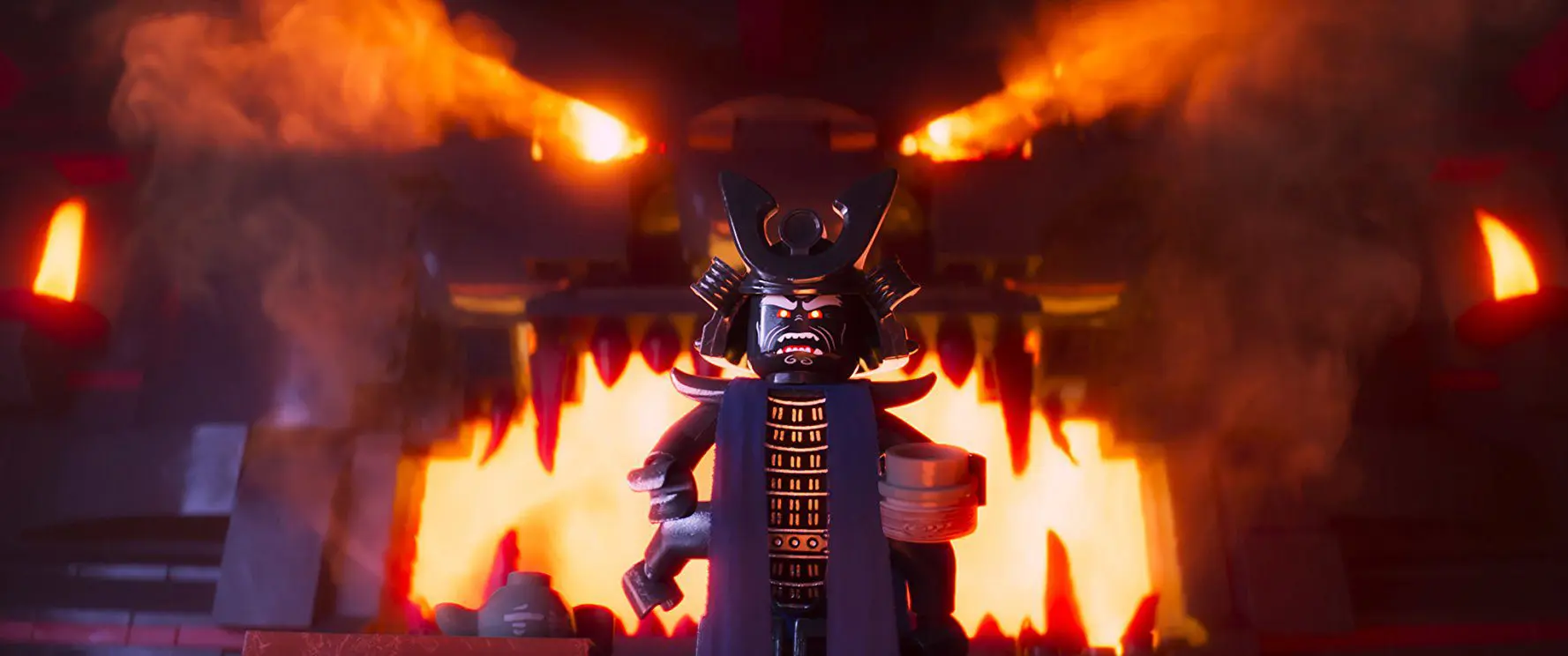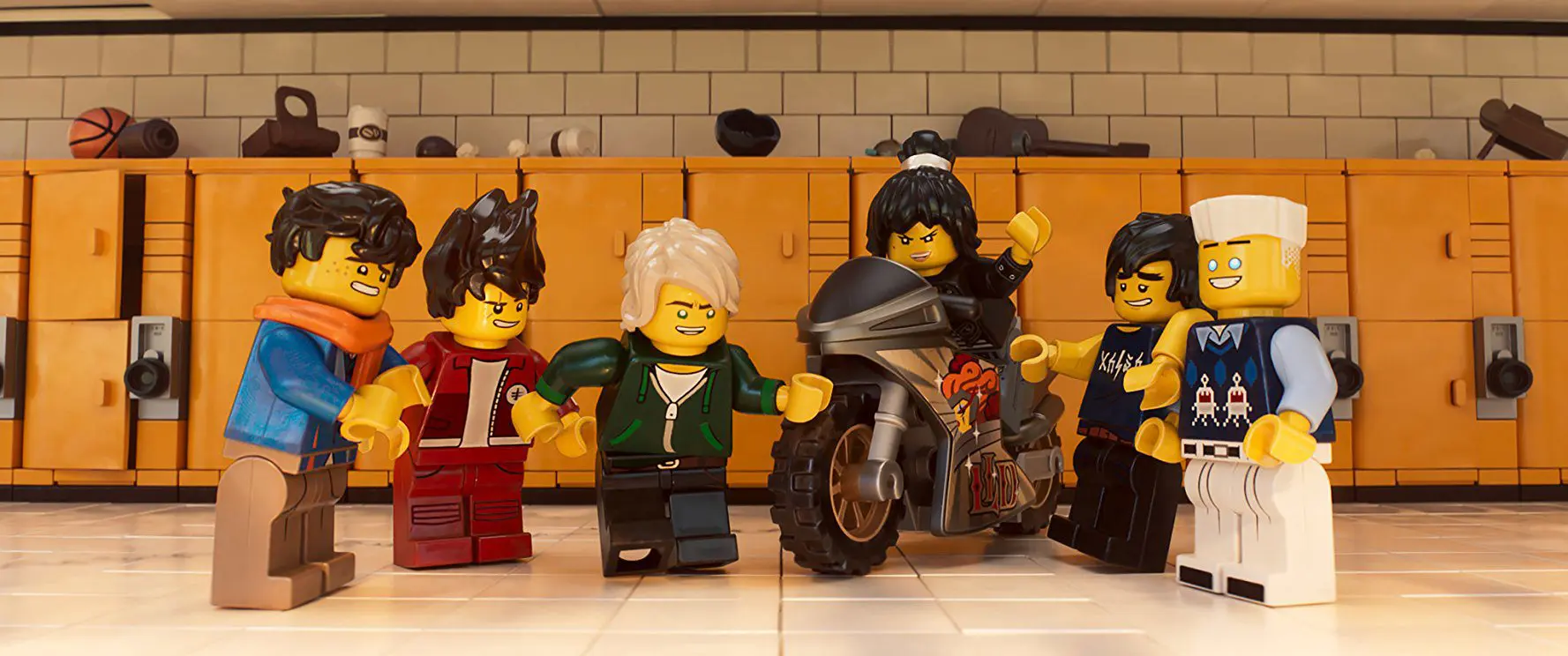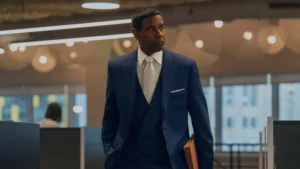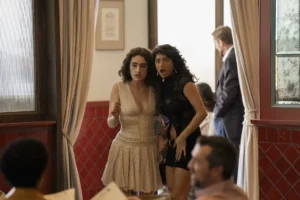Our third trip down the well-stocked aisles of Toys R Us, this time in search of LEGO’s apparently-popular Ninjago; a more narrative-heavy extension of LEGO’s ninja-themed sets from the 90s which fuse together martial arts, giant monsters and mecha imagery in a vague Pan-East-Asian metropolis.
It’s LEGO’s version of Power Rangers, as far as I can tell.
I know what you’re thinking. Are we supposed to have any idea what Ninjago is? All available evidence seems to suggest that unless you’re a kid, have kids, or are suspiciously into LEGO, then no, not really. I had to Google it, and after sweeping away the internet’s usual detritus what I discovered underneath it all was mostly an animated series that has been running on Cartoon Network for a few years called Ninjago: Masters of Spinjitzu, which apparently has its fans, but which this film is not actually an adaptation or continuation of. And that’s weird, as we’re suddenly in the remarkably cynical territory of LEGO simply releasing feature-length adaptations of their toys with less and less justification.
Yeah, I know, all three of these films have been cynical – on paper, anyway. But The Lego Movie, from 2014, got away with it on the strength of surprise, relentless, seemingly on-the-fly creativity, and a wealth of internet-savvy humour. And The Lego Batman Movie, from earlier this year, got away with it on the strength of being about Batman.
But The Lego Ninjago Movie lacks the former’s lightning-in-a-bottle innovation and the latter’s eminently mockable mythology. It has less reason to exist and makes less effort to convince audiences that it should. It’s still brisk and funny and sometimes quite creative, but that whole earnest self-satire shtick really starts to creep towards unacceptability when it’s being used as a marketing push for one of LEGO’s own properties.
Ninjas. And of course they’re colour-coded, elementally-themed ninjas with their own gimmick-appropriate giant robots. There’s Kai (Michael Pena), the fire ninja; Cole (Fred Armisen), the earth ninja; Zane (Zach Woods), the ice ninja who’s also a robot for some reason; Nya (Abbi Jacobson), the water ninja; Jay (Kumail Nanjiani), the lightning ninja; and Lloyd (Dave Franco), the… green ninja.
That last one’s a plot point, actually. See, Lloyd’s the son of Garmadon (Justin Theroux), an evil four-armed warlord who looks a bit like a Japanese oni beast and relentlessly terrorises the city of Ninjago. And all Lloyd’s high-school peers know this and hate him for it, without realising he’s also the extremely popular leader of the ninja group, who also ostracise him a little bit for the same reason.
A big part of the film – now that I think about it, the only part of the film, really – is about Lloyd figuring out his place in the world and his team, while coming to terms with the fact that his absentee father might never become the traditional male role-model he’d like him to be.
Then again, trying to plaster a socially-conscious narrative over a totally self-conscious world made of plastic LEGO bricks, wherein everybody is aware of the interchangeable nature of themselves and that world, is such a monumentally bad idea that there’s every chance it isn’t intended to land with any emotional impact at all. The most important thing is that it’s funny, and I can happily report that everything being made of toys is indeed still funny.
The conceit of fake-looking models combined with the appearance of stop-motion animation gives even the mundane settings and scenes a good-looking, playful vibe, and there’s still enough novelty in the concept of a LEGO movie that all the rote machinations of the plot have a bit more life to them than they might if the same story was told in live-action.
The script’s credited to a small army of writers, and if you toss enough darts, even over your shoulder, you’re going to hit the bull’s-eye a couple of times. Here it’s in the form of a live-action cat – dubbed Meowthra, in a cheeky homage to classic Japanese movie-monsters – that terrorises Ninjago when she’s accidentally lured by a laser pointer.
That’s the best bit, but there’s funny stuff scattered all the way through, especially in regards to how played-out all the themes and plot developments are. Self-awareness is rarely an adequate substitute for real engagement, but in all three of the LEGO movies that self-awareness has been the point – in this one, especially, as there isn’t really anything else to it.

It’s also worth mentioning that sometimes the visuals in these sequences do get garbled, and the sound mixing does occasionally drown out the jokes, and there are probably too many of them overall. The LEGO Ninjago Movie has to fill the time with something, though, because everyone outside of Lloyd and Garmadon is devoid of a discernable personality. They’re all filler.
As astonished as I am to be writing these words, My Little Pony: The Movie had the smarter idea in porting over its long-time core cast and creative personnel. Here, all the show’s vocal performers have been supplanted by more broadly recognisable comic actors, who’re all fine, don’t get me wrong, but they’re given so little material to work with that overhauling the entire cast just comes across as yet another cynical marketing ploy in a film that’s entire existence is really just a cynical marketing ploy.
The LEGO Ninjago movie is a perfectly serviceable bit of work. But all the ways in which it succeeds are the same ways the previous two films also succeeded; its failures are more interesting and noteworthy because they’re first-time offenses committed under corporate edict. And while all films are nakedly distributed to make money, they’re not all aimed primarily at kids, and they’re not all piggybacking on a brand that has thus far produced two really great comedy experiences.
It’s a shame, but the most noteworthy thing about this film is that it confirms that the LEGO movie model probably isn’t artistically sustainable. Whether that will result in fewer LEGO movies remains to be seen, but I wouldn’t bank on it.
If, like me, the only thing you know about Ninjago is what Google told you, then there’s very little here that’s going to help you form a connection to this world and these characters. If you’re a fan of the show, perhaps you’ll fare slightly better, but all available evidence seems to suggest that the thing you’ll be most struck by is how little in common the film has with it. It’s fine, but don’t expect anything more than that.




